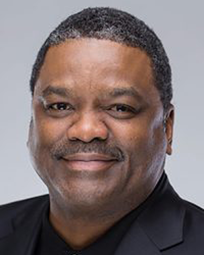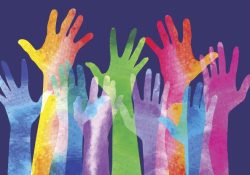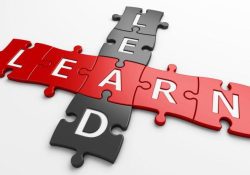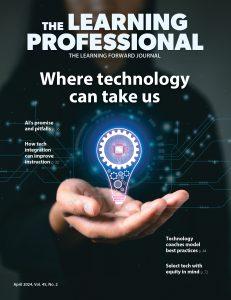Hey, that’s not fair!” It’s a credo repeated righteously on play scapes or amongst young siblings regularly. Unfair treatment, even at that early age, stirs a visceral reaction no matter who’s involved. And while the consequences of inequitable treatment may be as benign as an extra turn on the swing or a more lenient bedtime, the stakes are much higher when the inequities exist within the realm of education.
I turned to a career in public education in 1996, having served 22 years in the U.S. Air Force. It was a natural next step in my commitment to public service and the ideals of making a meaningful difference in the lives of children of all creeds, colors, and backgrounds. There is no arguing that the most important elements of a quality education are the interactions between student and teacher.
We must do everything we can to build educators’ capacity to ensure all students’ experiences with their teachers lead to learning. Therefore, as leaders throughout the system, we must continually address policies, protocols, practices, and resources that lead to a more effective teaching and learning environment.
Building equity is the first step toward effective teaching and learning. In fact, it is a principle that student teachers learn early on. The importance of differentiated instruction could serve as a case study for the importance of equity in itself. Imagine the teacher whose lesson plans consist solely of lectures. He tests the students and feels satisfied when only one-third of the class earns a passing grade. The teacher believes his teaching method was fair because all of the students received the same information, the same way.
This teaching method can’t be considered effective because educators understand that students learn in different ways. Teachers build equity in instructional practice when they use various methods to teach so that the visual learner and the interactive learner have the same access to learning as the audible learner.
In that sense, differentiated instruction is a building block for equity. Our public education system must differentiate the resources, practices, and opportunities for schools and districts much like a teacher differentiates instruction for student success. Equality and equity are not synonymous. Equality is easy to dole out with its formulaic premise. Achieving equity is much more complex. It calls for empathy and demands understanding and truth.
Equity is possible only when leaders at all levels understand the cultures, passions, strengths, and challenges of those entrusted in their care. When leaders do not understand those things, they must have the humility to admit it and the desire to learn and act responsively.
While many educators aspire to the ideal of equity, the practice of equity in public education remains a work in progress. And there is much work to do. From hiring and funding priorities to disproportionate academic outcomes and responsive interventions, public education faces an equity challenge.
Until every child has meaningful access to an education system that fully understands and is willing to address his or her cultural, physical, social, and emotional needs, we will continue to have a two-tiered public education system. The students who fit into the prescribed formula will become lifelong learners, while those students whose backgrounds and experiences differ will face greater challenges in becoming their fullest and best selves as learners.
We see education’s inequities play out daily in schools across the U.S. A recent report from the U.S. Department of Education’s Office for Civil Rights found that black students and students with disabilities in K-12 schools are suspended and arrested at much higher rates than their counterparts (U.S. Department of Education Office for Civil Rights, 2018). The report noted that black students are disproportionately dealt the harshest exclusionary penalties (i.e., expulsions and out-of-school suspensions) and black boys are far more likely to be disciplined.
Further, the disproportionate representation of minority students in special education programs can have immediate and long-term negative consequences, not the least of which is the mislabeling of a child’s academic potential that too often leads to lower expectations. Until we investigate how our own practices as educators contribute to such disproportionate results, we will not meet our aspirations to change.
Clearly, the demographic makeup and complexities of the U.S. are changing. Educators are compelled to address the urgency and critical importance of building and sustaining an education system that is just and equitable. Supporting educators to do this becomes a top item on every leader’s professional learning agenda, and leaders can’t neglect their own capacity on this topic.
A vision for equity starts at the top. All educators—whether superintendents, teachers, instructional coaches, or directors of curriculum—owe it to their students and communities to explore their assumptions, knowledge, and skills with a willingness to change.
Like children on a playground, adults recognize unjust practices when we see them. The question is, will we as educators be brave enough to shout out, “Hey, that’s not fair!”? And are we committed enough to take action to make change?
This column is adapted from the October 2018 issue of The Learning Professional.







